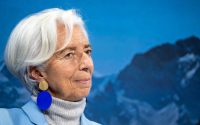At Art Fraud Trial, Sotheby’s Is Pressed on Role in Sales to Russian Oligarch
The painting Sotheby’s was trying to sell was a newly discovered work by one of the world’s greatest artists, Leonardo da Vinci. It was known as the “Salvator Mundi” and was a depiction of Christ.
But it had a code name: Jack.
Samuel Valette, a Sotheby’s specialist, testified in a Manhattan courtroom on Wednesday about how one day in March 2013 he had taken the painting crosstown in an S.U.V. from the auction house’s headquarters on York Avenue to a premier apartment overlooking Central Park.
It was one of the many trips he had made to display paintings for a prospective buyer, Valette said. He was, as usual, accompanied by security personnel, and the painting, already valued at tens of millions of dollars, was in a protective crate.
The apartment was owned by Dmitry Rybolovlev, a Russian oligarch who has sued Sotheby’s, accusing the auction house of aiding a Swiss dealer who he says defrauded him in the sale of several masterpieces.
Valette said he had not known whose apartment it was when he visited 15 Central Park West. Inside the home were two men, he said: the Swiss dealer, Yves Bouvier, a frequent client who had arranged the viewing, and Rybolovlev, whom he had met before.
But Valette insisted under questioning by Rybolovlev’s lawyer, Daniel J. Kornstein, that he had no idea whom the apartment belonged to.
“Are you saying, Mr. Valette, that you arranged for taking this very expensive painting to an apartment, and you didn’t know whose apartment it was?” Kornstein asked.
“I didn’t know whose apartment it was, that is correct,” Valette said, adding that insurers only cared to know the address and that Sotheby’s would be present.
“At the time, I think, Mr. Bouvier had told me that it was a big apartment building on Central Park West,” he said.
Valette’s mind-set — what he knew or did not know in his dealings with Bouvier — is at the heart of Rybolovlev’s case against the auction house, which has been the subject of a federal court trial now in its second week in Manhattan. Valette was the Sotheby’s executive who dealt with Bouvier in the sale of the da Vinci and three other works that are the focus of the case.
In each instance, Bouvier bought the works through Sotheby’s and then resold them to Rybolovlev at large markups. Rybolovlev says Bouvier tricked him by pretending to act as his art adviser in the transactions, even pretending to negotiate with phantom third parties when he was actually the owner of the works. He has argued that Valette understood what was going on and helped him.
Sotheby’s denies that. Bouvier, who is not a defendant in the case, has denied any wrongdoing and says it was always clear that he was acting as an independent dealer.
After the viewing on Central Park West, which Rybolovlev says was set up to give him an opportunity to examine the work, Bouvier purchased the da Vinci for $83 million, only to sell it a day later to Rybolovlev for $127.5 million.
Sotheby’s officials have argued that they had no knowledge of any fraud, if it ever happened, and have put forward the argument at trial that if anyone was to blame for buying overpriced art, it was Rybolovlev himself for not protecting himself against Bouvier’s actions.
But for Rybolovlev, Valette is central to the argument that Sotheby’s was knowingly part of a scheme to defraud him out of hundreds of millions of dollars.
Though Rybolovlev has accused Bouvier in court papers of defrauding him in the purchase of 38 works, only 12 of the works were bought by Bouvier in private sales arranged by Sotheby’s, and only four are the focus of the trial.
Bouvier has fought Rybolovlev’s accusations in legal disputes in Europe and Asia that ended after the parties reached a confidential settlement in Geneva late last year.
Rybolovlev’s lawyers have argued that Sotheby’s, which earned a $3 million commission on the sale of the da Vinci to Bouvier, was guided in its actions by its interest in pleasing a man who had become an important client.
In questioning Valette on Wednesday, Kornstein asked a wide range of questions about Valette’s input on the transactions between Bouvier and Rybolovlev. He asked, for example, why Valette had created Sotheby’s documents that Bouvier would eventually forward to Rybolovlev to persuade him to buy art; why Valette had created valuations that Rybolovlev has argued concealed the markups from him; and why Valette had kept Bouvier’s name out of transaction histories.
Valette replied that he knew Bouvier had resold art and that at some point he had learned that Rybolovlev was one of Bouvier’s clients. But he said he had never known which works Bouvier was selling to Rybolovlev and that whatever he had done constituted accepted practices and courtesies undertaken by specialists selling works to a buyer.
As far as he was concerned, he said, “Mr. Bouvier was the buyer.”
During earlier testimony on Tuesday, Valette had told the court that he did not know Bouvier was flipping the artworks to Rybolovlev
“I understand he was trying to sell them,” Valette said of Bouvier. “I didn’t understand that he was buying them on behalf of anybody.”
During Valette’s testimony on Wednesday, he was asked about an insurance valuation that Sotheby’s had provided for the da Vinci in 2015, after Bouvier had begun to suspect that he had paid large markups on the works he had purchased through Bouvier.
In the document, which was forwarded to Rybolovlev, the insurance valuation of the painting was increased despite the initial reservations of a Sotheby’s colleague, according to court papers, and the accompanying cover letter was edited to delete a reference to Bouvier’s earlier acquisition of the artwork.
Rybolovlev has argued that those changes were meant to help Bouvier conceal his alleged scheme.
Valette acknowledged on the stand that he had made the changes at Bouvier’s request. But he said they were the kinds of changes Sotheby’s would make for any high-end client and that eventually he had only gone with a valuation that had been approved by other Sotheby’s experts.
“I didn’t think about it, to be fair,” Valette said. “He asked for these two minor changes.”
He was also asked why, in the case of a Modigliani sculpture that Rybolovlev bought from Bouvier, he had revised an estimated value upward. Originally, he told Bouvier in a 2012 email that the artwork was worth at least 70 million to 90 million euros, or perhaps even more, only to revise that estimate to €80 million to €100 million less than 12 hours later. Bouvier forwarded the higher projection to Rybolovlev’s aide. Valette said the adjustment had been made because Bouvier had wanted him to be more specific.
“He wanted me to precise my thoughts,” he said.
Colin Moynihan contributed reporting.


